- Home
- Richard Dawkins
The Greatest Show on Earth Page 43
The Greatest Show on Earth Read online
Page 43
Stranger are the results set out in Table 2, which shows the equivalent percentages for the proposition that ‘The earliest humans lived at the same time as the dinosaurs.’ Once again, I have ranked the countries by the percentage giving the correct answer, which in this case is ‘false’.* Again Turkey comes out bottom, with a full 42% believing that the earliest humans co-existed with dinosaurs, and only 30% prepared to deny it, compared with 87% of Swedes. Britain, I am sorry to say, is in the bottom half, with 28% of us apparently getting our scientific and historical knowledge from the Flintstones rather than from any educational source.
TABLE 1: Responses to the proposition that ‘human beings, as we know them today, developed from earlier species of animals’
As a biological educator, I find myself pathetically consoled by another result from the Eurobarometer survey revealing the large number (19% in Britain) who believe it takes one month for the Earth to go around the sun. The figure is more than 20% for Ireland, Austria, Spain and Denmark. What, I wonder, do they think a year is? Why do the seasons come and go with such regularity? Are they not even curious about the reasons for such a salient feature of their world? These remarkable figures shouldn’t really be consoling, of course. My emphasis was on ‘pathetically’. I meant that we seem to be dealing with a general ignorance of science – which is bad enough, but at least it is better than the positive prejudice against one particular science, namely evolutionary science, which seems to be present in Turkey (and, one can’t help guessing, in much of the Islamic world). Also, undeniably, in the United States of America, as we saw in the Gallup and Pew polls.
In October 2008 a group of about sixty American high-school teachers met at the Center for Science Education of Emory University, in Atlanta. Some of the horror stories they had to tell deserve wide attention. One teacher reported that students ‘burst into tears’ when told they would be studying evolution. Another teacher described how students repeatedly screamed ‘No!’ when he began talking about evolution in class. Another reported that pupils demanded to know why they had to learn about evolution, given that it was ‘only a theory’. Yet another teacher described how ‘churches train students to come to school with specific questions to ask to sabotage my lessons’. The Creation Museum in Kentucky is a lavishly financed institution entirely devoted to history-denial on this advanced scale. Children can ride on a model dinosaur with a saddle – and it’s not just a bit of fun: the message is explicit and unequivocal that dinosaurs lived recently and coexisted with humans. It is run by Answers in Genesis, which is a tax-exempt organization. The taxpayer, in this case the American taxpayer, is subsidizing scientific falsehood, miseducation on a grand scale.
TABLE 2: Responses to the proposition that ‘the earliest humans lived at the same time as the dinosaurs’
Such experiences are common throughout the United States, but also, though I am loath to admit it, becoming so in Britain. In February 2006 the Guardian reported that ‘Muslim medical students in London distributed leaflets that dismissed Darwin’s theories as false. Evangelical Christian students are also increasingly vocal in challenging the notion of evolution.’ The Muslim leaflets are produced by the Al-Nasr Trust, a registered charity with tax-free status.* So the British taxpayer, too, is subsidizing the systematic distribution of a major and serious scientific falsehood to British educational institutions.
In 2006 the Independent reported Professor Steve Jones, of University College London, as saying:
It’s a real social change. For years, I’ve sympathised with my American colleagues, who have to cleanse creationism from their students’ minds in their first few biology lectures. It’s not a problem we’ve faced in Britain until now. I get feedback from Muslim schoolkids who say they are obliged to believe in creationism, because it’s part of their Islamic identity, but the people I find more surprising are the other British kids who see creationism as a viable alternative to evolution. That’s alarming. It shows how infectious the idea is.
The polls, then, suggest that at least 40% of Americans are creationists – that’s dyed-in-the-wool, out-and-out, anti-evolution creationists, not believers in ‘evolution but God sort of helped it along’ (there were plenty of them too). The equivalent figures for Britain, and much of Europe, are slightly less extreme, but not much more encouraging. There are still no grounds for complacency.
* Similar to the US Nova, which often releases programs originally aired on Horizon, or enters into co-production arrangements with Horizon.
* I suppose, if I am to be pedantic, I have to acknowledge that modern zoologists classify birds as surviving dinosaurs. Strictly speaking, therefore, the correct answer is ‘true’, and the Turkish majority are right. I think we may safely assume, however, that when people are asked a question like that, they take ‘the dinosaurs’ to exclude birds and include only the extinct ‘terrible lizards’ that gave us the word.
* Tax-free status is easily obtained by almost any religious organization. Organizations that are not religious have to jump through hoops to demonstrate that they benefit humanity. I recently established a charitable foundation dedicated to promoting ‘Reason and Science’. During the protracted, extremely expensive, and ultimately successful negotiations to obtain charitable status, I received a letter from the British Charity Commission dated 28 September 2006 which contained the following: ‘It is not clear how the advancement of science tends towards the mental and moral improvement of the public. Please provide us with evidence of this or explain how it is linked to the advancement of humanism and rationalism.’ Religious organizations, by contrast, are assumed to benefit humanity without any obligation to demonstrate it and even, apparently, if they are actively engaged in promoting scientific falsehood.
NOTES
PREFACE
p. vii offered an unfamiliar vision: The Selfish Gene (1976; 30th anniversary edn 2006) and The Extended Phenotype (rev. edn 1999).
p. vii My next three books: The Blind Watchmaker (1986), River Out of Eden (1995) and Climbing Mount Improbable (1996).
p. vii My largest book: The Ancestor’s Tale (2004).
CHAPTER 1: ONLY A THEORY?
p. 5 In 2004 we wrote a joint article in the Sunday Times : ‘Education: questionable foundations’, Sunday Times, 20 June 2004.
p. 12 ‘Occasionally, I get a letter from someone’: Sagan (1996).
p. 13 ‘We may all have come into existence five minutes ago’: Bertrand Russell, Religion and Science (Oxford: Oxford University Press, 1997), 70.
p. 14 ‘A famous example was prepared by Professor Daniel J. Simons at the University of Illinois: Simons and Chabris (1999).
p. 16 ‘In Texas alone, thirty-five condemned people have been exonerated since DNA evidence became admissible in court: The Innocence Project, http://www.innocenceproject.org.
p. 16 during his six years as Governor, George W. Bush signed a death warrant once a fortnight on average: 152 in total; see ‘Bush’s lethal legacy: more executions’, Independent, 15 Aug. 2007.
p. 17 Darwin explained in his autobiography: Darwin (1887a), 83.
p. 17 under the influence, Matt Ridley suspects: Matt Ridley, ‘The natural order of things’, Spectator, 7 Jan. 2009.
CHAPTER 2: DOGS, COWS AND CABBAGES
p. 30 ‘My dear Wallace’: Marchant (1916), 169–70.
p. 31 fn. There is a persistent, but false, rumour: The matter of Darwin’s alleged knowledge of Mendel’s research is taken up in Sclater (2003).
p. 34 mongrels or mutts (as President Obama delightfully described himself): ‘Puppies and economy fill winner’s first day’, Guardian, 8 Nov. 2008.
p. 35 Other genetic routes produce miniature breeds that retain the proportions of the original: Fred Lanting, ‘Pituitary dwarfism in the German Shepherd dog’, Dog World, Dec. 1984, reproduced at http://www.fredlanting.org/2008/07/pituitary-dwarfism-in-the-german-shepherd-dog-part-1/.
CHAPTER 3: THE PRIMROSE PATH TO MACRO-EVOLUTION
p. 50 �
�I have carefully measured the proboscis of a specimen’: Wallace (1871).
p. 57 ‘The resemblance of Dorippe to an angry Japanese warrior’: Julian Huxley, ‘Evolution’s copycats’, Life, 30 June 1952; also in Huxley (1957) as ‘Life’s improbable likenesses’.
p. 58 I even found a website where you can vote: Samurai crab poll from http://www.pollsb.com/polls/view/13022/the-heike-crab-seems-to-have-a-samurai-face-on-its-back-what-s-the-explanation.
p. 58 as one authoritative sceptic has pointed out: Martin (1993).
p. 65 ‘My dear Darwin’: Marchant (1916), 170.
p. 67 agronomists at the Illinois Experimental Station began the experiment rather a long time ago: Dudley and Lambert (1992).
p. 67 seventeen generations of rats, artificially selected for resistance to tooth decay: Ridley (2004), 48.
p. 74 ‘eager to establish human contact’: Trut (1999), 163.
p. 77 The so-called spider orchid: Some websites about these include http://www.arhomeandgarden.org/plantoftheweek/articles/orchid_red_ spider_8-29-08.htm, http://www.orchidflowerhq.com/Brassiacare.php, http://www.absoluteastronomy.com/topics/Brassia, http://en.wikipedia.org/wiki/Brassia.
p. 78 it can be seen in the recording of the lecture called ‘The Ultraviolet Garden’: Available on the DVD Growing Up in the Universe from richard-dawkins.net.
p. 79 Each species mixes a characteristic cocktail of substances gathered from various sources: Eltz et al. (2005).
p. 81 I have discussed the cleaning habit elsewhere: Dawkins (2006), 186–7.
CHAPTER 4: SILENCE AND SLOW TIME
p. 92 fn. Alas, the popular legend: The legend that the periodic table came to Mendeleev in a dream is discussed in G. W. Baylor, ‘What do we really know about Mendeleev’s dream of the periodic table? A note on dreams of scientific problem solving’, Dreaming 11: 2 (2001), 89–92.
p. 97 A fortunate aspect of the way igneous rocks solidify is that they do so suddenly: A sophisticated refinement of the method, ‘Isochron dating’, is fully described by Chris Stassen on the excellent ‘Talk.Origins’ website: www.talkorigins.org/faqs/isochron-dating.html.
p. 100 Here’s a direct quotation from a prizewinning creationist website: From http://homepage.ntlworld.com/malcolmbowden/creat.htm.
p. 105 The strip was divided into three parts: Shroud of Turin dating from Damon et al. (1989).
p. 107 And I haven’t even mentioned various other dating methods: For a full list of methods, see http://www.usd.edu/esci/age/current_scientific_clocks.html#.
CHAPTER 5: BEFORE OUR VERY EYES
p. 112 The graph above shows data from the Uganda Game Department: Brooks and Buss (1962).
p. 113 In that year experimenters transported five pairs of Podarcis sicula from Pod Kopiste: Research on the lizards of Pod Mrcaru from Herrel et al. (2008) and Herrel et al. (2004).
p. 117 All this has been achieved with the bacterium Escherichia coli : Lenski E. coli research from Lenski and Travisano (1994). In addition, Lenski group publications are collected at http://myxo.css.msu.edu/cgi-bin/lenski/prefman.pl?group=aad.
p. 131 the celebrated scientific blogwit PZ Myers: http://scienceblogs.com/pharyngula/2008/06/lenski_gives_conservapdia_a_le.php
p. 133 The experiments that John Endler recounted: Guppies research from Endler (1980, 1983, 1986).
p. 138 Among those who have taken it up is David Reznick of the University of California at Riverside: Reznick et al. (1997).
p. 140 some zoologists dispute Lingula ’s claim to be an almost wholly unchanged ‘living fossil’: e.g. Christian C. Emig, ‘Proof that Lingula (Brachiopoda) is not a living-fossil, and emended diagnoses of the Family Lingulidae’, Carnets de Géologie, letter 2003/01 (2003).
CHAPTER 6: MISSING LINK? WHAT DO YOU MEAN, ‘MISSING’?
p. 143 What do you mean, ‘missing’?: www.talkorigins.org/faqs/faq-transitional/part2c.html#arti, http://web.archive.org/web/19990203140657/gly.fsu.edu/tour/article_7.html.
p. 147 ‘already in an advanced state of evolution’: Dawkins (1986), 229.
p. 151 ‘If people came from monkeys via frogs and fish, then why does the fossil record not contain a “fronkey”?’: ‘Darwin’s evolutionary theory is a tottering nonsense, built on too many suppositions’, Sydney Morning Herald, 7 May 2006.
pp. 151–2 long list of comments that follow an article in the Sunday Times (London): http://www.timesonline.co.uk/tol/news/uk/education/article4448420.ece.
p. 153 Here is one called Eomaia : Ji et al. (2002).
p. 154 Atlas of Creation : Incredibly there are now no fewer than three volumes of this infamous waste of expensive, glossy paper.
p. 154 a fishing lure as a ‘caddis fly’: This can be seen clearly at http://www.grahamowengallery.com/fishing/more-fly-tying.html.
p. 163 ‘We went straight to the Museum’: Smith (1956), 41.
p. 168 Tiktaalik ! A name never to be forgotten: http://www90.homepage.villanova.edu/lowell.gustafson/anthropology/tiktaalik.html
p. 172 Pezosiren , the ‘walking manatee’ fossil: Domning (2001).
p. 172 exciting news came in: Natalia Rybczynski, Mary Dawson and Richard Tedford, ‘A semi-aquatic Arctic mammalian carnivore from the Miocene epoch and origin of Pinnipedia’, Nature 458 (2009), pp. 1021–4. You can see a short film of Natalia Rybczynski enthusiastically discussing the new fossil at http://nature.ca/pujila/ne_vid_e.cfm.
p. 174 Odontochelys semitestacea : Li et al. (2008).
p. 175 The ‘News and Views’ commentary on the Odontochelys paper: Reisz and Head (2008).
p. 177 Proganochelys : Joyce and Gauthier (2004).
p. 179–80 In another book I described DNA as ‘the Genetic Book of the Dead’: Dawkins (1998), ch. 10.
CHAPTER 7: MISSING PERSONS? MISSING NO LONGER
p. 185 ‘Pithecanthropus [Java Man] was not a man’: Dubois (1935), also quoted in http://www.talkorigins.org/pdf/fossil-hominids.pdf.
p. 185 The creationist organization Answers in Genesis has, however, added it to their list of discredited arguments: http://www.answersingenesis.org/home/area/faq/dont_use.asp.
p. 186 ‘Georgian Man’: http://www.talkorigins.org/faqs/homs/d2700.html.
p. 187 We are not descended from chimpanzees: http://www.talkorigins.org/faqs/homs/chimp.html.
p. 189 The type specimen is the first individual of a new species to be named: There is a useful list of hominid type specimens at http://www.talkorigins.org/faqs/homs/typespec.html.
p. 190 fn. Arguably one of Darwin’s greatest successors of the twentieth century: See Hamilton’s collected papers interspersed with his own idiosyncratic reminiscences in Hamilton (1996, 2001), the second volume of which also contains my own funerary tribute to him.
p. 193 the following range of names: http://www.mos.org/evolution/fossils/browse.php.
p. 198 ‘The morning-after pill is a pedophile’s best friend’: ‘Morning-after pill blocked by politics’, Atlanta Journal-Constitution, 24 June 2004.
CHAPTER 8: YOU DID IT YOURSELF IN NINE MONTHS
p. 212 fn. ‘All things dull and ugly’: lyrics reproduced with thanks by permission of Python (Monty) Pictures. Thanks to Terry Jones and Eric Idle.
p. 218 There are some stunning films available on YouTube: For example, http://www.youtube.com/watch?v=XH-groCeKbE.
pp. 219–20 Calling it ‘Boids’, Craig Reynolds wrote a program along these lines: http://www.red3d.com/cwr/boids/.
p. 229 it has been deciphered by a group of scientists associated with the brilliant mathematical biologist George Oster: Odell et al. (1980).
p. 233 An early classic experiment by the Nobel Prize-winning embryologist Roger Sperry: Meyer (1998).
p. 243 the complete family tree of all 558 cells of a newly hatched larva: C. elegans cell family tree from www.wormatlas.org/userguides.html/lineage.htm. The entire wormatlas.org site is a treasure trove of information on these minute creatures. I also strongly recommend the three Nobel Prize speeches on C. elegans from Sydney Brenner, H. R
obert Horvitz and John Sulston – Brenner (2003), Horvitz (2003), Sulston (2003) – which are also available to read or view at http://nobelprize.org/nobel_prizes/medicine/laureates/2002/index.html.
CHAPTER 9: THE ARK OF THE CONTINENTS
p. 253 There are tiny nematode worms: http://www.bayercropscience.co.uk/pdfs/nematodesguide.pdf.
p. 257 Dr Ellen Censky, who led the original study: Censky et al. (1998).
p. 260 ‘Seeing this gradation and diversity of structure’: Darwin (1845), 380.
p. 261 ‘It is a hideous looking creature’: Darwin (1845), 385–6.
p. 262 ‘Hence we have the truly wonderful fact’: Darwin (1845), 396.
p. 262 ‘My attention was first thoroughly aroused’: Darwin (1845), 394–5.
p. 263 ‘that the tortoises differed from the different islands’: Darwin (1845), 394.
p. 267 ‘Almost every rocky outcrop and island has a unique Mbuna fauna’: Owen et al. (1989).
p. 271 ‘With respect to the absence of whole orders on oceanic islands’: Darwin (1859), 393.
p. 272 ‘the naturalist in travelling’: Darwin (1859), 349.
pp. 282–3 How do they cope with it? Very weirdly indeed: At least some of them are confused. Others may be dishonest. The young Earth account at http://www.answersingenesis.org/articles/am/v2/n2/a-catastrophic-breakup is refuted in detail by an old Earth creationist at http://www.answersincreation.org/rebuttal/aig/Answers/2007/answers_v2_n2_tectonics.htm.

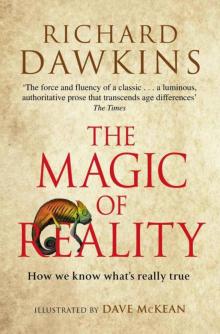 The Magic of Reality
The Magic of Reality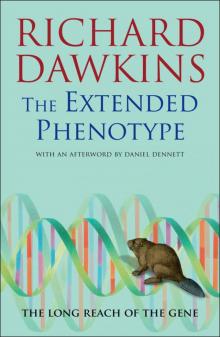 The Extended Phenotype
The Extended Phenotype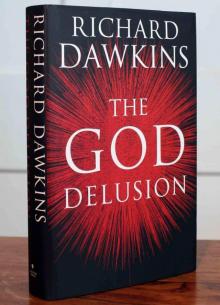 The God Delusion
The God Delusion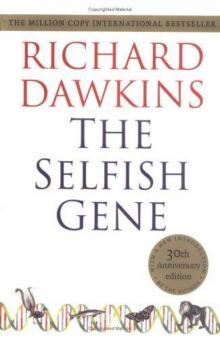 The Selfish Gene
The Selfish Gene The Blind Watchmaker
The Blind Watchmaker The Greatest Show on Earth
The Greatest Show on Earth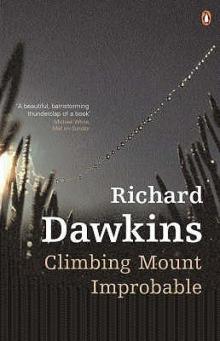 Climbing Mount Improbable
Climbing Mount Improbable Outgrowing God
Outgrowing God Brief Candle in the Dark
Brief Candle in the Dark The Greatest Show on Earth: The Evidence for Evolution
The Greatest Show on Earth: The Evidence for Evolution Science in the Soul
Science in the Soul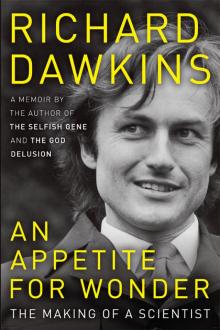 An Appetite for Wonder
An Appetite for Wonder